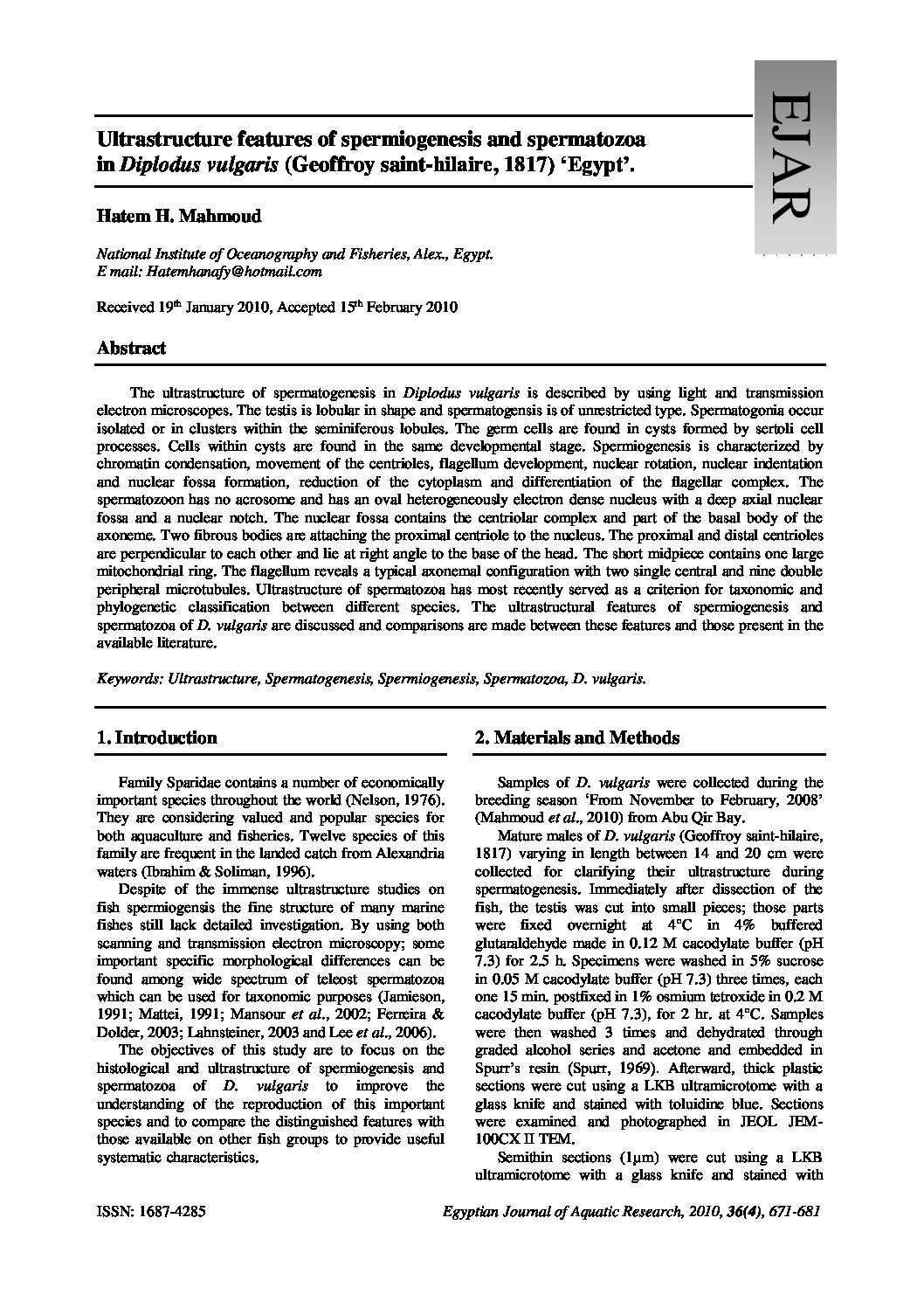Categories
vol-36Ultrastructure features of spermiogenesis and spermatozoa
in Diplodus vulgaris (Geoffroy saint-hilaire, 1817) ‘Egypt’.
Hatem H. Mahmoud
National Institute of Oceanography and Fisheries, Alex., Egypt.
E mail: [email protected]
Received 19th January 2010, Accepted 15th February 2010
Abstract
The ultrastructure of spermatogenesis in Diplodus vulgaris is described by using light and transmission
electron microscopes. The testis is lobular in shape and spermatogensis is of unrestricted type. Spermatogonia occur
isolated or in clusters within the seminiferous lobules. The germ cells are found in cysts formed by sertoli cell
processes. Cells within cysts are found in the same developmental stage. Spermiogenesis is characterized by
chromatin condensation, movement of the centrioles, flagellum development, nuclear rotation, nuclear indentation
and nuclear fossa formation, reduction of the cytoplasm and differentiation of the flagellar complex. The
spermatozoon has no acrosome and has an oval heterogeneously electron dense nucleus with a deep axial nuclear
fossa and a nuclear notch. The nuclear fossa contains the centriolar complex and part of the basal body of the
axoneme. Two fibrous bodies are attaching the proximal centriole to the nucleus. The proximal and distal centrioles
are perpendicular to each other and lie at right angle to the base of the head. The short midpiece contains one large
mitochondrial ring. The flagellum reveals a typical axonemal configuration with two single central and nine double
peripheral microtubules. Ultrastructure of spermatozoa has most recently served as a criterion for taxonomic and
phylogenetic classification between different species. The ultrastructural features of spermiogenesis and
spermatozoa of D. vulgaris are discussed and comparisons are made between these features and those present in the
available literature.
Keywords: Ultrastructure, Spermatogenesis, Spermiogenesis, Spermatozoa, D. vulgaris.







